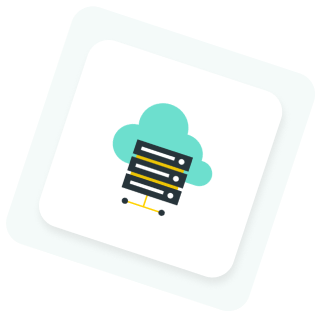Enterprise Software Governance in 2025: From Oversight to Orchestration
Introduction: Governance Is Now a Business Driver
Software governance has shifted from being a compliance obligation to becoming a strategic imperative. In 2025, IT leaders are no longer just stewards of systems—they are orchestrators of secure, agile, and compliant digital ecosystems. As AI tools proliferate, regulatory frameworks tighten, and SaaS adoption deepens, governance is now deeply connected to business outcomes.
The New Scope of Software Governance
Modern software governance extends far beyond license tracking. It now encompasses:
- Shadow IT and Shadow AI control
- Cloud-native software monitoring
- Data sovereignty enforcement
- Real-time policy enforcement
With SaaS and GenAI tools being deployed at the edge by business units, governance must evolve from central command to real-time orchestration across the enterprise.
IT Leaders Are Now Strategic Orchestrators
In 2025, CIOs and IT procurement heads are expected to align software governance with business innovation, regulatory landscapes, and risk tolerance. That means:
- Enabling controlled experimentation with GenAI
- Ensuring tools are selected and maintained based on business impact
- Bridging legal, finance, and operational silos with integrated governance practices
This orchestration role requires both cultural influence and technical capability.
From Inventory to Intelligence: Software Asset Management 2.0
Software asset management (SAM) has matured. Instead of maintaining spreadsheets or static CMDBs, leading organizations use AI-powered platforms that offer:
- Dynamic usage dashboards
- Context-aware renewal alerts
- Integration with compliance and security engines
SAM 2.0 brings intelligence to governance—helping leaders make decisions based on value, risk, and business alignment.
Compliance-Driven Procurement: Not Just IT’s Job Anymore
Compliance in 2025 is a cross-functional mandate. Legal, finance, and IT work together to:
- Vet vendors against frameworks like SOC 2, ISO 27001, DORA, and the AI Act
- Co-author contract clauses for data handling and audit rights
- Integrate vendor risk ratings into procurement scoring models
Tools like those mentioned in the ̽��ϵ�� Compliance Tool Stack help cross-functional teams evaluate vendors holistically—not just on price or features.
Integrating Governance in Agile Environments
Many teams worry that governance slows innovation. But in 2025, governance can be agile too:
- Embedding approval checkpoints within DevOps workflows
- Offering self-service software catalogs with pre-vetted tools
- Using real-time risk scoring to approve or deny deployments
This “governance-as-a-service” approach keeps teams moving—without compromising standards.
Governance by Design: Embedding from Procurement Onward
Smart organizations are shifting governance left—building it into procurement, not retrofitting it afterward. This includes:
- Standardized vendor evaluation frameworks
- Policy-driven automation of contract approvals
- Integration of AI risk levels into sourcing decisions
Resources like the Software Governance Framework Guide offer practical templates for embedding governance early in the buying journey.
Zero Trust and Software Access Control
Zero Trust is no longer limited to network security. In 2025, it applies to software governance too:
- Contextual access control to SaaS and AI tools
- Continuous authentication for admin privileges
- Usage monitoring tied to user identity and device posture
This reinforces governance without introducing friction—especially important as remote and hybrid work persist.
AI-Powered Governance ̽��ϵ��s
AI is not just something to govern—it is also a governance engine. Today’s governance platforms use AI to:
- Auto-discover unapproved tools and integrations
- Map software usage to regulatory requirements
- Alert on behavior anomalies (e.g., unsanctioned exports or excessive usage spikes)
This automation reduces manual audits and keeps governance real-time.
Measuring the Maturity of Governance Models
To benchmark progress, organizations are using maturity models that consider:
- Governance coverage (SaaS, GenAI, cloud-native apps)
- Audit trail completeness and traceability
- Integration of risk scoring in decision workflows
These benchmarks are often tied to performance reviews and compliance readiness assessments.
Governance Risks in a Multi-Vendor, Multi-Cloud World
The more vendors and platforms a company uses, the harder it is to maintain control. Key risks include:
- SLA gaps and third-party dependencies
- Conflicting compliance standards
- Overlapping licenses and inconsistent entitlements
This is why centralized oversight—backed by real-time data—is crucial.
Toolchain Consolidation: A Governance Imperative
Reducing tool redundancy helps simplify governance. Benefits include:
- Fewer audit scopes
- Easier data protection compliance
- Clearer accountability across vendors
Teams using ̽��ϵ�� report faster renewal cycles and more confident compliance attestations.
Culture of Governance: Training and Incentivizing Teams
Even the best policies fail without adoption. Leading enterprises now:
- Embed governance training into onboarding and leadership tracks
- Recognize teams that flag risks or improve compliance posture
- Use dashboards to gamify software hygiene metrics
Culture, not control, is what drives sustainable governance.
Futureproofing with Global Regulations in Mind
The regulatory landscape is evolving fast. Forward-thinking companies are preparing for:
- Full enforcement of the EU AI Act
- DORA audits for digital resilience in financial services
- Increasing ESG and sustainability disclosures tied to software supply chains
Staying ahead means building flexible, modular governance frameworks that adapt as laws change.
Free Trial: See Governance in Action with ̽��ϵ��
Want to see how modern governance works in practice?
Try ̽��ϵ��’s 14-day free trial to centralize your software visibility, automate compliance checks, and streamline procurement. Experience how real-time governance delivers cost savings, audit readiness, and strategic clarity.
Final Thoughts: Orchestrating Control, Value, and Agility in 2025
Software governance in 2025 is no longer reactive. It’s dynamic, intelligent, and collaborative. By orchestrating people, tools, and policies with purpose, IT leaders can move beyond oversight—and deliver governance that enables trust, growth, and innovation.


.png)














